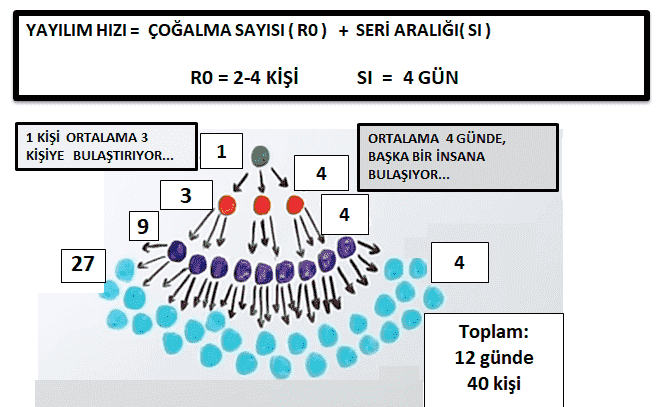Darren McCaffrey
Euronews Political Editor
@DarrenEuronews
In the coming weeks, our daily special coverage newsletter will be dedicated to bringing you the latest updates from Europe on the coronavirus outbreak.
WHAT ELSE IS GOING ON?
SECOND WAVE Countries are starting to ease lockdown measures and citizens are gradually returning to some semblance of normality. Experts warn lower infection rates combined with higher temperatures could lead to complacency among people regarding social distancing and hygiene rules. Based on studies of previous pandemics, a second wave is likely to occur this time as well. The EU institutions are paying close attention to these warnings, as Jack Parrock reports from Brussels.
AND SECOND LOCKDOWN Most shops in Greece are now allowed to reopen, but some owners are worried about what comes next. They fear that, if infections rise again in the coming weeks and restrictions are reinstated, their businesses will never recover. While Greece has so far managed to weather the health crisis comparatively well, it’s expected to be one of the European countries to suffer the most from the economic fallout
INSIDE THE CARE HOME CRISIS The coronavirus has swept through Europe’s care homes, killing thousands of residents. These deaths are believed to account for half of the total victims of COVID-19. In the latest episode of Unreported Europe, Valérie Gauriat speaks to families, care workers and associations as she investigates some of the best and worst practices surrounding the management of this tragic crisis.
CARE HOME DEATHS The Irish government is coming under mounting pressure over the number of deaths in care homes. Residential and community care facilities, including nursing homes, now account for more than 62 percent of COVID-19-related deaths in the country, according to figures released by the Department of Health. One nurse told Euronews that more than half of the care staff at the nursing home where she works are off sick. Shona Murray has more.
WORST-HIT WORKERS The UK’s Office of National Statistics (ONS) reports that male security guards, taxi drivers and chefs are among the UK workers worst-hit by the COVID-19 pandemic. Bus drivers, sales assistants and male construction workers also seem to be particularly susceptible.
ADDITIONAL ENTRY POINT The novel coronavirus is known for infiltrating the body through the respiratory tract. However, researchers in Hong Kong are now warning that COVID-19 infection via the eyes is also a big risk, because this strain is stronger than previous coronaviruses. But they insist hand hygiene is still more useful than wearing face protection.
FOOTBALL RESTART The first football match to take place in western Europe since the coronavirus outbreak was not in one of Europe’s elite leagues, but in a tiny self-governing archipelago with a population of just 50,000 people. And it currently sits at number 110 in FIFA’s official rankings. Can you guess where it is?
STAT OF THE DAY
Europe’s biggest budget airline will resume 1,000 flights a day from 1 July and restore 90% of its pre-pandemic route network. Before the COVID-19 crisis, Ryanair was operating 2,400 flights a day. It will restart flying from most of its 80 bases across the continent. All passengers will be forced to wear face masks and, yes, put their hand up, if they want to use the toilet.
THE SCIENCE OF SOCIAL BUBBLES
Weeks of non-existent physical contact with friends and family living anywhere other than their own household have been a difficult feat for many. But the advice of many governments is that this has also been key to stopping the spread of the coronavirus. As Europe begins to look past its lengthy lockdowns, a fine balance is becoming apparent; between reintroducing crucial social interaction and maintaining a low transmission rate.
The UK is currently mulling over the idea of implementing “social bubbles” – a restricted form of face-to-face contact – while waiting for a vaccine to be developed. The general principle of a social bubble is that you can have contact with people outside of your household, but keep the number of people tightly restricted.
“If we all interact within this small group of people, we can prevent the virus spreading further,” Oxford University sociologist Per Block told Euronews. “If I am in a bubble with nine people, I can only spread the virus to them and they can’t spread it any further.” But how do you choose your bubble? Who do you let in and who do you leave out? Rachael Kennedy explores these and other questions about the concept.
ON A POSITIVE NOTE
It’s a dilemma that restaurateurs have been scratching their heads about: how to re-open to diners and stay safe amid the COVID-19 pandemic. One venue in Amsterdam thinks it might have found a solution. Mediamatic Biotoop, an art centre in the Dutch city, is putting outdoor diners in tiny greenhouses in a bid to adhere to social distancing guidelines.
The small greenhouses were built as an art project. But now they have been turned into private dining spaces. Waiting staff wear protective equipment and serve food on long wooden planks. The greenhouses can hold a maximum of two people.
Willem Velthoven, director of the art centre, said the COVID-19 crisis had forced restaurants to “rethink hospitality.” “Being together in large groups will probably be out of fashion for a while, but still, coming in a social situation and really enjoying things together is something that we long for even more,” said Velthoven.
The centre held a test event earlier this month and is planning on using the greenhouses again on 21 May and 27 June.
NO COMMENT
Paris commuters are subject to strict rules and regulations, stretching beyond carrying a work certificate, as they board public transport.


Leave a Reply